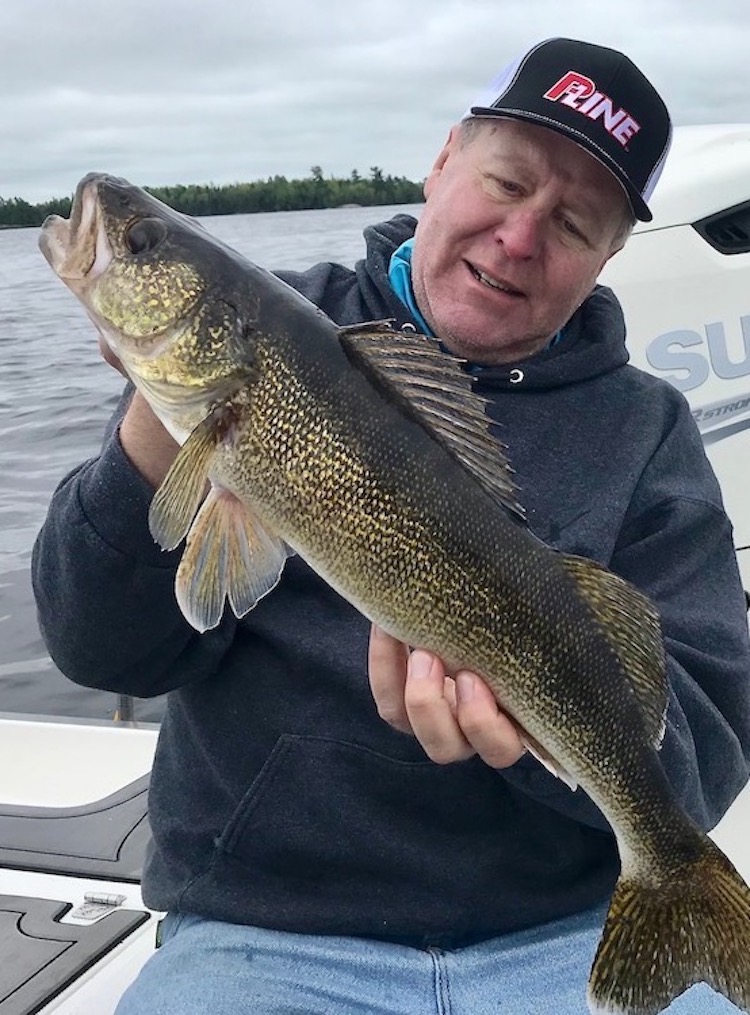Opening Day Walleye Success!

By Mike Frisch
If was a long winter and even longer spring as many have spent the past several weeks social distancing! Now, however, it’s fishing season and our governor has told us to get outside and go fishing, while still being safe. So, we best heed that advice!
A key to “walleye opener” success is choosing the right lake, with water temperature being a top consideration. For that reason, I like to start on a small, shallow lake that warms quickly. This year, however, a somewhat early ice out (at least in comparison to recent years) could mean that some bigger lakes have warmer-than-usual water and produce fish during early season too.
Finding lakes with warm water is a key, and so is considering a lake’s fishing history. I like to pick a lake for opener that traditionally produces good early season catches. And, lakes where the walleyes bit well last fall and again last winter deserve consideration too.
Regardless the lake selected, I start my early season search along the lake’s first drop-off where the shoreline flat dumps into deeper water. Specifically, I look for differences along that edge, maybe areas of emerging weeds, bottom composition changes, or small turns or points on the drop-off. These spots often congregate baitfish drawing walleyes as well.
Cruising through likely looking areas and watching my sonar unit helps me find weeds, bottom composition changes, and baitfish and walleyes too. My Solix sonar units feature a combination of MEGA Side & Down Imaging and CHIRP Sonar that, when used together, help me easily “see” the various structural elements as well as any baitfish and bigger fish relating to them. A quick cruise through a potential fishing area in search mode before actually wetting a line is a great way to eliminate unproductive water and quickly get on a bite!
Sometimes during this search, I locate fish up on the shallow flat adjacent to the drop-off, while at other times they relate to the drop-off. Regardless where they’re at, a great way to catch them is by pitching or slowly trolling/drifting fishing a classic jig and minnow combination. When they’re on the flat, I like to pitch the jig to avoid spooking those shallow fish. When deeper ‘eyes are found, the slow troll method is a great way to present the bait.
Jigs with spot-tail shiner minnows are the bait of choice on lakes with good populations of those minnows, while jigs and fatheads works just as well on lots of small, shallow lakes.
Regardless which minnow is used, I prefer a jig with a concave head that “stands up” and keeps the minnow with its tail up, particularly when pitching the shallows This style allows the bait to struggle near bottom on the pause, with the minnow still being visible to nearby fish.
The new Crater Head Jig is my jig-of-choice for this fishing. We had a chance to sample this “new to the market” jig when pitching to walleyes in the shallows late last fall and had excellent success. The jig will be available in several sizes and colors, with an 1/8-ounce head being my choice for shallow, early season walleyes. If the water fished is a bit off color, a bright color often is most productive. More subtle colors are often preferred in clearer waters.
Regardless whether you fish clear water or off-colored waters, attracting walleyes is the goal of opening day anglers. The tips just offered are designed to help anglers do just that! Good luck on the opener and remember to include a youngster in your next outdoors adventure.
Mike Frisch hosts the popular Fishing the Midwest TV series. Visit www.fishingthemidwest to see more fishing tips and view recent TV episodes as well!
Photo – Fishing the Midwest founder Bob Jensen with an early season walleye caught on a jig and minnow combination.

